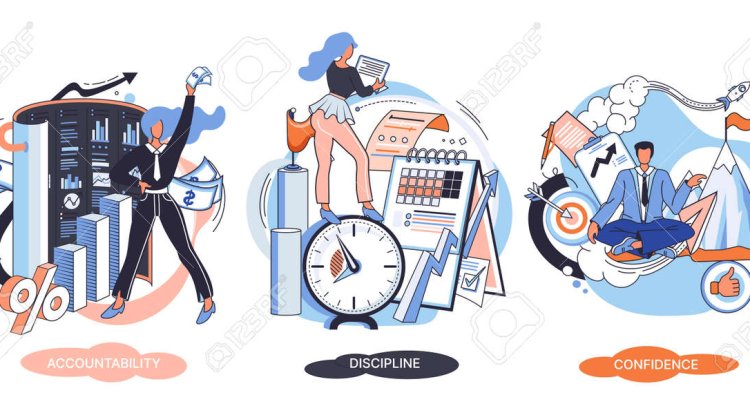How to Start Saving Money When Living Paycheck to Paycheck
Living paycheck to paycheck doesn’t mean you can’t save. This guide breaks down practical, step-by-step strategies to help employees, freelancers, and business owners escape the paycheck trap. Learn how to budget, save small, eliminate debt, and build financial freedom—even on a tight income.

Introduction: Why Saving Feels Impossible — But Isn’t
You’ve probably heard it before: “Just save 20% of your income.”
But what if you barely make it to the next payday?
For millions of people around the world — from Nairobi to New York, from Lagos to London — living paycheck to paycheck has become the new normal. Rising rent, food prices, debt, and daily expenses leave little to nothing to save.
Yet here’s the truth: you can start saving even when it feels impossible.
The wealthy didn’t start with millions — they started with habits.
In this guide, you’ll learn how to break the paycheck-to-paycheck cycle, save money strategically, and build financial stability — step by step, regardless of your income.
Step 1: Face the Reality — Know Exactly Where Your Money Goes
You can’t fix what you can’t see.
Most people don’t have a money problem; they have a clarity problem.
Start with a Money Audit
For the next 30 days, track every single expense — coffee, transport, lunch, M-Pesa fees, everything. Use:
-
Apps: Mint, Chipper, or Spendee.
-
Manual: Notebook or Google Sheet.
Once you see where your money actually goes, you’ll realize you can’t save what you don’t measure.
Example:
Janet earns KSh 80,000 a month.
After tracking her expenses, she discovered KSh 12,000 went to takeout food and another KSh 6,000 to impulse shopping.
That’s KSh 18,000 in hidden savings potential!
Action Step:
Write down:
-
Your total income.
-
Total expenses.
-
How much remains (if any).
This becomes your starting point for transformation.
Step 2: Create a Realistic Budget That Works
A budget isn’t punishment — it’s a freedom plan.
It tells your money where to go instead of wondering where it went.
Try the 50/30/20 Rule (Customizable)
-
50% Needs: Rent, food, transport, utilities.
-
30% Wants: Entertainment, fashion, dining out.
-
20% Savings/Debt payoff: Start small — even 5% matters.
Can’t save 20% yet? Start with 5% and grow slowly. Consistency matters more than size.
“If you can save KSh 500 from KSh 10,000, you can save KSh 5,000 from KSh 100,000.”
Budgeting Tools:
-
Kenya: M-Pesa Go, iSave, Money Manager.
-
Global: YNAB (You Need A Budget), EveryDollar, PocketGuard.
Step 3: Pay Yourself First — Not Last
This is the golden rule of saving.
Don’t save what’s left after spending — spend what’s left after saving.
The rich automate savings. They treat it as a non-negotiable bill.
Automate Your Savings:
Set a standing order or auto-transfer:
-
Before bills hit your account.
-
Every payday — even if it’s just $10 (or KSh 1,000).
Example:
If your salary hits on the 30th, set an automatic transfer on the 1st to your savings or SACCO account.
Consistency creates compound success.
Pro Tip:
Open a separate savings account — no ATM card.
That makes it harder to spend your savings impulsively.
Step 4: Build an Emergency Fund (Your Safety Net)
You can’t build wealth on instability.
The first goal of saving isn’t investing — it’s security.
What’s an Emergency Fund?
It’s a small buffer — your “financial seatbelt.”
Start with $100 (or KSh 10,000), then aim for 3–6 months’ expenses.
This protects you from:
-
Job loss
-
Medical bills
-
Unexpected repairs or emergencies
Without a fund, you’ll always fall back on debt — and that’s how cycles repeat.
Real-Life Example:
David lost his freelance gig but had two months’ expenses saved.
That cushion gave him peace of mind — and time to find new clients without panic.
Your emergency fund buys freedom, not luxury.
Step 5: Control Debt Before It Controls You
Debt isn’t evil — but unmanaged debt destroys progress.
Most paycheck-to-paycheck stress comes from loan payments, credit cards, or mobile lending apps.
Strategy 1: The Snowball Method
-
Pay off the smallest debt first for quick wins.
-
Roll the freed money into the next debt.
Strategy 2: The Avalanche Method
-
Pay off the highest interest debt first.
-
Saves you more in the long term.
Example:
-
KSh 10,000 @ 25% interest (mobile loan)
-
KSh 50,000 @ 15% interest (credit card)
-
KSh 100,000 @ 10% (SACCO loan)
Start with the 25% one — that’s your money leak.
Stop borrowing for non-essentials.
The rich use debt to grow assets, not lifestyles.
Step 6: Save Small, Win Big
Saving is not about amounts; it’s about momentum.
Simple Saving Tricks:
-
“Round up” savings: If something costs $4.30, save the $0.70 difference.
-
No-spend days: Pick 2–3 days a week to spend nothing.
-
Save your raises: When your salary increases, keep your spending flat.
-
Use cash, not cards: Cash makes you more aware of spending.
Example:
Skip one takeout meal weekly → save $10.
That’s $520 per year — enough to start an investment or emergency fund.
Wealth is built by small, consistent actions.
Step 7: Make Your Savings Work — Start Investing (Even Small)
Once you’ve built your first emergency fund, don’t let money sleep.
Inflation silently eats your savings if it’s idle.
Beginner-Friendly Investment Options:
| Type | Description | Example Platforms |
|---|---|---|
| SACCOs & Cooperatives | Pool savings and earn dividends | Stima SACCO, Safaricom SACCO |
| Money Market Funds (MMF) | Safer than stocks, pays interest | Cytonn, Zimele, Britam |
| Stocks & ETFs | Own shares of companies | NSE, Robinhood, Bamboo |
| Digital Assets | Crypto, tokenized stocks | Binance, YellowCard |
| Real Estate Crowdfunding | Small property investments | REITs, local platforms |
Start small, stay consistent, and reinvest your gains.
The goal isn’t fast profits — it’s financial progress.
Step 8: Reprogram Your Mindset About Money
Your mindset determines your money reality.
If you believe you’ll always struggle, your habits will match that belief.
Shift from Scarcity to Abundance
Scarcity says: “I can’t save.”
Abundance says: “I’ll find a way to save something.”
Practical Mindset Shifts:
-
Stop comparing: Your path is unique.
-
Avoid lifestyle inflation: Don’t upgrade every time your income grows.
-
Celebrate progress: Even $10 saved is a victory.
-
Surround yourself with savers: Join money-minded communities.
Mindset is 80% of money success; strategy is only 20%.
Step 9: Find Ways to Increase Your Income
You can only cut so much — but your earning potential is limitless.
Side Hustles & Skills:
-
Freelancing (writing, design, translation)
-
Online teaching or consulting
-
Affiliate marketing or digital products
-
Reselling items online
-
Monetizing YouTube, TikTok, or blogging
Use skills you already have.
Even $100 extra monthly can change your entire financial trajectory.
Don’t just manage money — multiply it.
Step 10: Build Systems, Not Willpower
Saving fails when it relies on motivation alone.
Create systems that make saving automatic.
Example Systems:
-
Automatic transfers: Move money to a separate savings or MMF account.
-
Account separation: One account for bills, one for savings.
-
Visual progress tracking: Charts, apps, or jars — seeing progress motivates action.
Discipline beats desire.
Real Stories — Ordinary People Who Broke the Cycle
1. Faith – Nairobi, Kenya
Faith earned KSh 60,000 monthly. She started saving KSh 500 weekly, joined a SACCO, and reinvested her dividends. After 18 months, she had KSh 120,000 and used it to start a small online store.
2. Ade – Lagos, Nigeria
Ade lived paycheck to paycheck as a teacher. He began freelancing online and put 20% of every extra payment into an emergency fund. Two years later, he paid off all his debts and started investing in MMFs.
3. Maria – Manila, Philippines
Maria used the “pay yourself first” rule. She automated $30 savings monthly. Three years later, she had over $1,000 saved — her first financial safety net ever.
Small steps lead to massive freedom.
Step-by-Step 30-Day Challenge
| Week | Goal | Actions |
|---|---|---|
| 1 | Track spending | Record every expense daily. |
| 2 | Create budget | Apply 50/30/20 or 70/20/10 plan. |
| 3 | Automate savings | Set automatic transfer (start small). |
| 4 | Build momentum | Open MMF or SACCO account; save extra income. |
By Day 30, you’ll not only have savings — you’ll have control.
Smart Tools for Paycheck-to-Paycheck Savers
| Purpose | Tool | Region |
|---|---|---|
| Budgeting | YNAB, EveryDollar, M-Pesa App | Global, Africa |
| Tracking | Mint, Spendee | Global |
| Investing | Bamboo, Hisa, Robinhood | Global, Africa |
| Community | Facebook finance groups, Reddit r/PersonalFinance | Global |
| Education | Coursera, YouTube, Podcasts | Global |
Key Takeaways
✅ Start small — but start now. Even $5 a week matters.
✅ Automate savings so you never skip.
✅ Cut debt and avoid lifestyle traps.
✅ Increase income through new skills or side hustles.
✅ Learn constantly — financial literacy is your ultimate power.
???? You don’t need more money to start — you need a new mindset.
Conclusion: You Can Break the Cycle — Starting Today
Living paycheck to paycheck doesn’t mean you’re financially broken — it means you’re ready for change.
Start small. Save what you can. Build habits that outlive your paycheck.
The goal isn’t to be rich overnight — it’s to gain control, peace, and freedom.
Remember:
“The secret to getting ahead is getting started.”
And the best day to start? Today.
Final Call to Action
Ready to take charge of your money?
Subscribe to Wealth Global Insights for weekly expert tips on saving, investing, and building financial independence.
Join Free Today: Get Weekly Money Lessons →
What's Your Reaction?




















